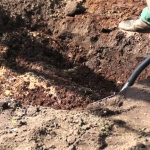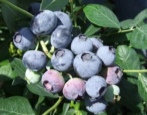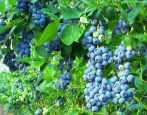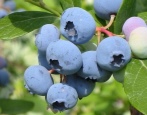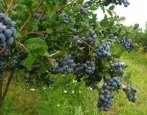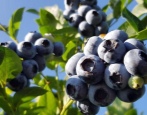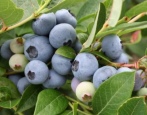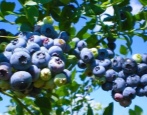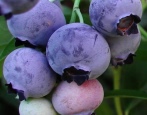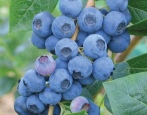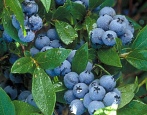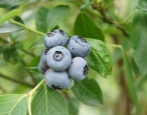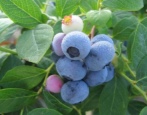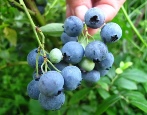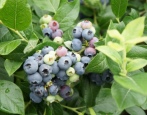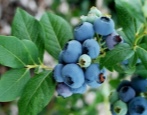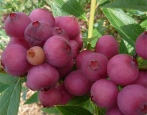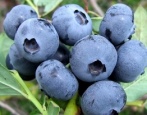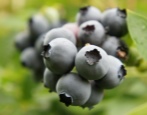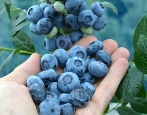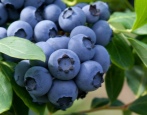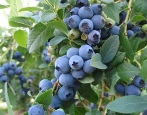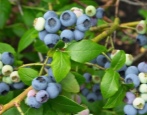
- Authors: Canada
- Name synonyms: Vaccinium corymbosum Darrow
- Ripening terms: late ripening
- Growth type: tall
- Bush height, m: 1.5-1.8 (up to 2)
- Taste: dessert, sweet and sour
- Yield: high
- Average yield: up to 5-8 kg per bush
- Fruit size: very large
- Fruit shape: flat-round
Blueberry is a berry shrub that occupies a worthy place on the site of many summer residents, since it is easy to grow, and the fruits of the culture are very healthy and tasty. One of the popular varieties is the Canadian Darrow variety.
Description of the variety
Darrow blueberry, bred by Canadian scientists in 1965, is a tall bush with a vertical crown, which, under the pressure of numerous berries, turns from a spherical into a spreading one. The compact shrub is characterized by upright, elastic branches and flexible light gray shoots, as well as moderate foliage with bright green foliage, which acquires a reddish tint by autumn. In favorable conditions, the bush grows to a height of 180-200 cm.
During the flowering period, the shrub takes on a decorative appearance, abundantly covered with snow-white flowers. Blueberries bloom in early June, sometimes in the middle of the month.
Fruit characteristics
The Canadian blueberry is classified as a large-fruited species. The average weight of a berry is 2-2.5 g (diameter is about 2-2.2 cm). The shape of the berries is correct - flat-round, slightly flattened, with a smooth surface. At the stage of technical maturity, the berries have a pale greenish color. Ripe blueberries are evenly colored in light blue or deep blue color, diluted with a pronounced bluish bloom. The skin of the berries is thin, so the fruit can burst.
The harvested berries can be transported, and also stored for some time at a temperature of + 10-12. At a temperature of +2, the keeping quality of berries can be extended. It is recommended to transport the crop in plastic containers with lids.
The vitamin berry has a universal purpose - it is eaten raw, frozen, processed into jams, fruit drinks, ground with sugar and dried in a dehydrator.
Taste qualities
Darrow's late blueberries are famous for their excellent and memorable taste. The flesh of the berries is dense, fleshy, tender and juicy. The fruit has a sweet and sour taste, complemented by a bright aroma. Delicate wine notes are felt in the aftertaste, which will not leave indifferent any housewife. Blueberry pulp has a record amount of vitamin C.
Ripening and fruiting
The berry is characterized by late ripening. The shrub begins to bear fruit in the 2nd year after planting. You can taste blueberries in mid-August. The fruits do not ripen at the same time, so the fruiting of the variety is stretched out - it can last 2-3 weeks. Mass ripening and picking of berries begins after August 17th. In regions with short and cold summers, sometimes all the berries do not have time to ripen.
Yield
Yield is another advantage of the variety. Taking care of a berry bush, you can get a decent harvest - up to 5-8 kg of vitamin fruits. Some experienced summer residents claim that the yield increases slightly in an adult tree.
Self-fertility and the need for pollinators
Darrow is a self-pollinated variety and therefore does not need additional auxiliary cross-pollination. In practice, planting additional pollinating varieties can increase the yield by a quarter.Effective donor varieties for Darrow blueberries will be Patriot, Berkeley, Bluegold and Spartan.
Growing and caring
Planting of seedlings is carried out both in the spring (until the growing season) and in the fall (before stable frosts). It is important to observe the distance between plantings - 1-1.5 meters.
One / two-year-old seedlings are bought for planting. In the process of growing blueberries, they need intensive agrotechnical measures: watering, feeding, maintaining the acidity of the soil, shaping the bush, thinning by removing excess branches and growths, preventing diseases, preparing for cold weather and caring for the soil (loosening, weeding, mulching).
It is worth remembering that watering with the age of the tree becomes more intense. In addition, the plant reacts very positively to root feeding. Acidity is regulated by irrigation with acidified water. The formation of a bush and the removal of branches is carried out from 2-3 years of blueberry growth.
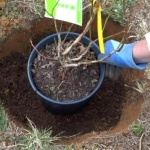
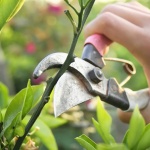
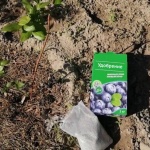
Disease and pest resistance
The variety is highly resistant to most fungal and bacterial infections, but sometimes, under the influence of negative weather conditions or due to improper care, blueberries are affected by powdery mildew, anthracnose, brown and gray rot, late blight. Among the pests that bother the shrub, it is worth noting aphids, whites, flower beetles and gall midges.
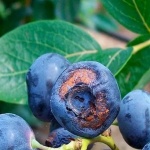
Winter hardiness and the need for shelter
The frost resistance of the variety is high, so the plant is not afraid of temperature drops to -25-35 degrees. In regions where winters are more severe, it is recommended to shelter shrubs with burlap or spruce branches.
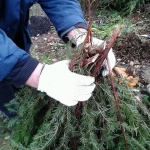
Location and soil requirements
Darrow prefers sunny areas with acidic soil, protected from gusty winds. Despite the fact that the berry culture is absolutely unpretentious to the soil, it prefers to grow on nutritious, fluffy, breathing soils. Peat bogs, sandy loams and loams with acidity up to pH 5.5 are best suited.
